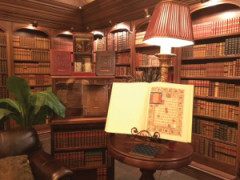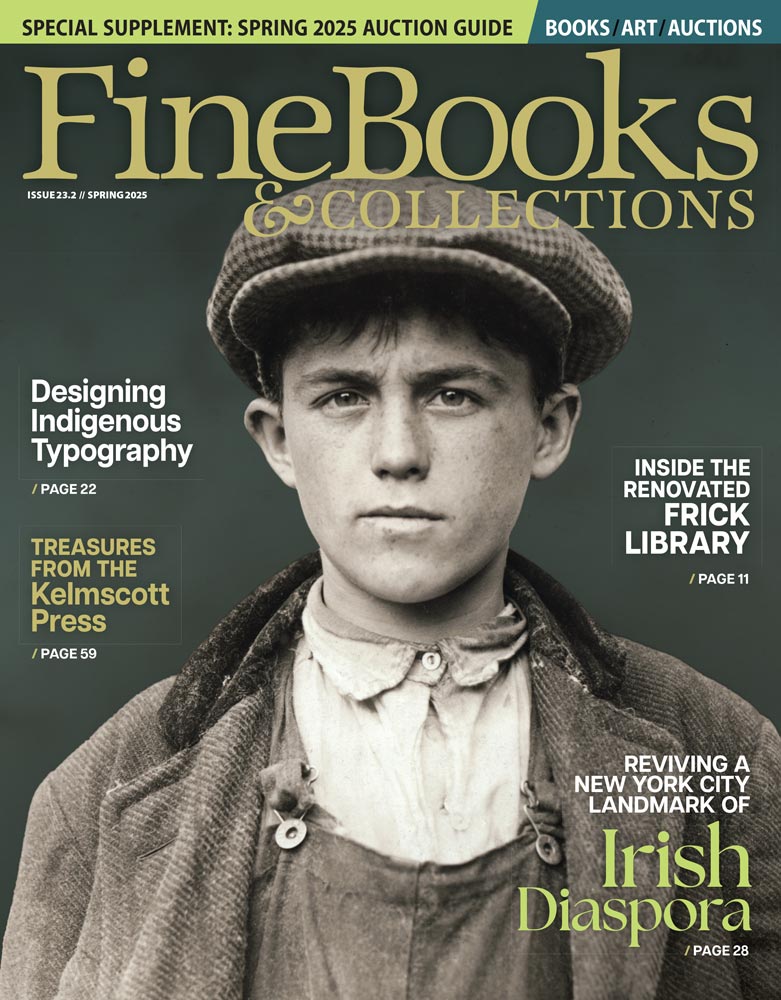Our Bright Young Librarians series continues today with Erika Jenns, Engagement Consultant for the Southern Tier Library System in Painted Post, New York.
What is your role at your institution?
I am the Engagement Consultant for the Southern Tier Library System in Painted Post, New York. If you're unfamiliar with the vast, unknown, Upstate part of New York, Painted Post is a small town next to Corning, which is a slightly larger small town, located south of the Finger Lakes. The Southern Tier Library System (STLS) is a cooperative library system made up of 48 public library outlets, across five counties in the Southern Tier region. In my role as the Engagement Consultant, I oversee digital collections and resources for the system, assist libraries with annual reports to the state and website development, manage social media, public relations, and marketing, and create workshops and continuing education opportunities for member library staff.
After reading that description, you might wonder how I've come to be associated with the world of rare books and special collections. My response is twofold. First, while my current position isn't rooted in special collections, I do assist our member libraries with handling historical collections, digitization, and donations of special collections materials. Second, my education and prior library experience are in special collections. In a short time, I've held several positions. Prior to STLS, I was the Scholarly Engagement Librarian at Indiana University, and before that, I held a variety of positions at the Lilly Library in both public services and conservation. I am also occasionally an assistant to antiquarian bookseller Paul Dowling of Liber Antiquus, and I devote a not-inconsequential amount of time to work on RBMS committees.
How did you get started in rare books?
Like many others interviewed before me, my introduction to and subsequent involvement in the world of special collections was slow to develop and fairly circuitous. I began my college education at Indiana University as a journalism major, switched to psychology, added English and creative writing, some Spanish, and I still had no idea that an incredible special collections library (the Lilly Library) was housed in a building that I walked past every day. Even further from my realm of understanding was that those items housed in the Lilly could help me advance my studies and that many would one day become objects of fascination for me.
During my junior year, I took a class on American poetry, and finally the introduction was made. I was lucky to have a professor, Christoph Irmscher, who recognized the importance of familiarizing his students with special collections repositories and the items held within them. As a class, we visited the Lilly Library several times throughout the semester to work with special collections materials. In doing so, we were introduced to the Plath manuscripts, Poe's Tamerlane and Other Poems (the Lilly has one of 12 surviving copies), and Whitman's many editions of Leaves of Grass. To conclude the course, I wrote a paper comparing seven editions of Leaves of Grass, and for the first time, I began to consider using special collections materials as tools for understanding authorship and readership. In Whitman's works, I encountered marginalia, differences in the typesetting and cover design, and saw the way Whitman evolved as a poet and printer. This course piqued my interest in rare books, and I spent the following summer at the Watkinson Library at Trinity College in Hartford, Connecticut. As an intern there, I modified catalogue records for 207 volumes by Lydia H. Sigourney (a 19th-century American poet). I found ephemera and marginalia between the pages of her texts, and the experience solidified my decision to pursue a degree in library science with a specialization in rare books and special collections.
Where did you earn your MLS/advanced degree?
I received both my MLS with the Rare Books and Special Collections Specialization and my MA in English from Indiana University, in Bloomington, Indiana.
Favorite rare book / ephemera that you've handled?
Forgive me while I digress. In eighth grade, my English teacher asked us to memorize and recite for the class one of three poems: "O Captain! My Captain!" by Whitman, "The Raven" by Poe, and a third poem, which I can't recall. I chose "The Raven." The assignment sparked my interest in poetry, and from there, I pursued creative writing. My commitment to writing ebbed and flowed, but I did ultimately complete an undergraduate degree in creative writing with a focus on poetry. Because of this, Poe, and especially "The Raven," has always had a special place in my heart, and there's something about ?douard Manet's illustrations for Stephane Mallarmé's translation, "Le Corbeau," that really speak to me.
Now, back to the topic at hand. In November at the Boston Antiquarian Book Fair, bookseller Benjamin Spademan had a copy of "Le Corbeau," and for the first time, I got to see Manet's rendering of the raven, in print (not a reproduction) and full scale. It was lovely. I've also handled Poe's hair; two locks are held at the Lilly Library, one of which is encased in a broach - hair in special collections is weird, but cool. The Lilly also has an interesting collection of materials on early bicycling. I helped process the collection when it came in, and some of my favorite items depicted "women awheel." I particularly enjoyed learning about the transition in women's clothing from full skirts to bloomers to accommodate bicycling and the controversies that ensued.
What do you personally collect?
I have a small, eclectic collection. Some discernable categories include: children's books, especially with marginalia or interesting illustrations; small press books, particularly those written and printed by friends; exhibition catalogues; and books about books and printing. The remaining space on my shelves is occupied by books I purchased for my graduate courses, including works by Sidney Berger, Bamber Gascoigne, Philip Gaskell, and Thomas Tanselle.
What do you like to do outside of work?
Outside of work, I like to be outside. My recent (just over a year ago) move to Upstate New York has been fantastic for this. Beautiful lakes, waterfalls, nature preserves, and parks abound here. In addition to hiking my way through that list, I spend winters downhill skiing. Fortunately, there are infinitely more places to do that here, as compared to Indiana. I also play Ultimate (Frisbee) several times a week, which I enjoy immensely.
What excites you about rare book librarianship?
Marginalia! There's such an intimate quality to handwriting, and I rarely encounter it in my daily work life, where communication is largely conducted via email. Each time I find something written in the margins or pressed between the pages of a text, I feel excited and want to know more about who left it, why, and what it can tell me about contemporary readers.
Outside of the text, it's the relationships I've had the opportunity to build as part of the rare books and special collections community that excite me about rare book librarianship. The Rare Books and Manuscripts Section of ACRL has been the perfect professional home for me. Through my work on the Membership and Professional Development (M&PD) committee and on the RMBS Mentoring Program, I've met so many wonderful people who've been friends, mentors, supporters, encouragers, and advocates.
M&PD was the first committee meeting I attended at an RBMS conference. Patrick Olson, my conference buddy at RBMS14, invited me to join. Even as a first-time conference attendee, I felt like I could speak up and share my thoughts at the table. Now, as co-chair of M&PD with Diane Dias De Fazio, I hope that we are able to cultivate the same welcoming atmosphere. Facilitating connections between my peers in special collections excites me most. My greatest professional pleasure and sense of achievement comes when I connect someone with a mentor and know that the relationship will be mutually beneficial.
Thoughts on the future of special collections / rare book librarianship?
I often find that people are surprised when I tell them that I'm a librarian, and then, confused when I mention special collections. I think the surprise is because they aren't expecting the response of "librarian" in answer to the question "What do you do?" I guess because I don't look like the default stereotypes of librarianship that they have stored away. After moving beyond the surprise, the other side of the conversation tends to turn to how libraries will soon be obsolete, don't offer anything other than books, ebooks are taking over the world, and "Aren't you worried about job security?" While I do enjoy reading post-apocalyptic fiction, and I believe my vigorous consumption of the genre has prepared me for success in such an environment, I do not believe that the death of print is imminent. In particular, special collections give me hope. These repositories go above and beyond in preserving history and helping users engage with items from our collective and shared past. Even the small, rural libraries that I work with in my current position are doing this work as they digitize collections of local newspapers and maintain local genealogy collections. There is a place for books and the printed word now, and there will continue to be. As things become increasingly digital, we'll crave a return to what is natural and known.
Any unusual or interesting collection at your library you'd like to draw our attention to?
Since I'm not technically working in a library setting, this is a tough question, but it does give me the opportunity to brag about the STLS member libraries. Many of the libraries are situated in small, rural communities, and as you might imagine, they've become repositories for local history collections, newspapers, collections of arrowheads, and other miscellaneous medium-rare items. The libraries themselves are often located in buildings that are on the National Register of Historic Places. For example, the building that houses the Belmont Literary and Historical Society Free Library was built between 1893 and 1904. It is a triangular brick structure that features a three-story clock tower. The clock itself must be hand wound every week and is one of three in existence. Each of the libraries in our system is unique, and I love traveling to visit them. If you're ever driving across the state, I highly recommend making a few detours to visit the local public libraries.



